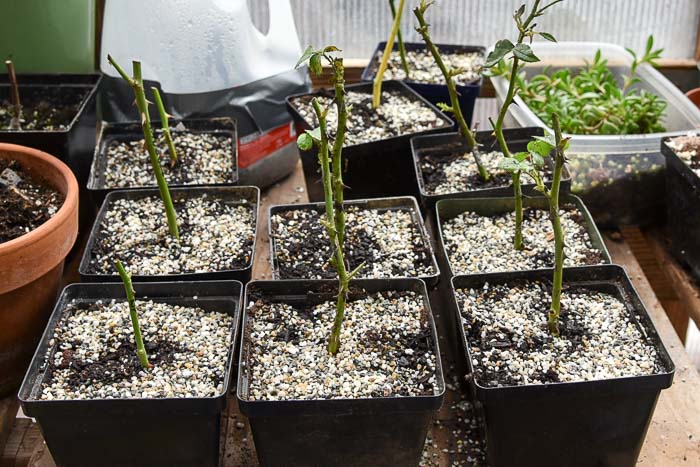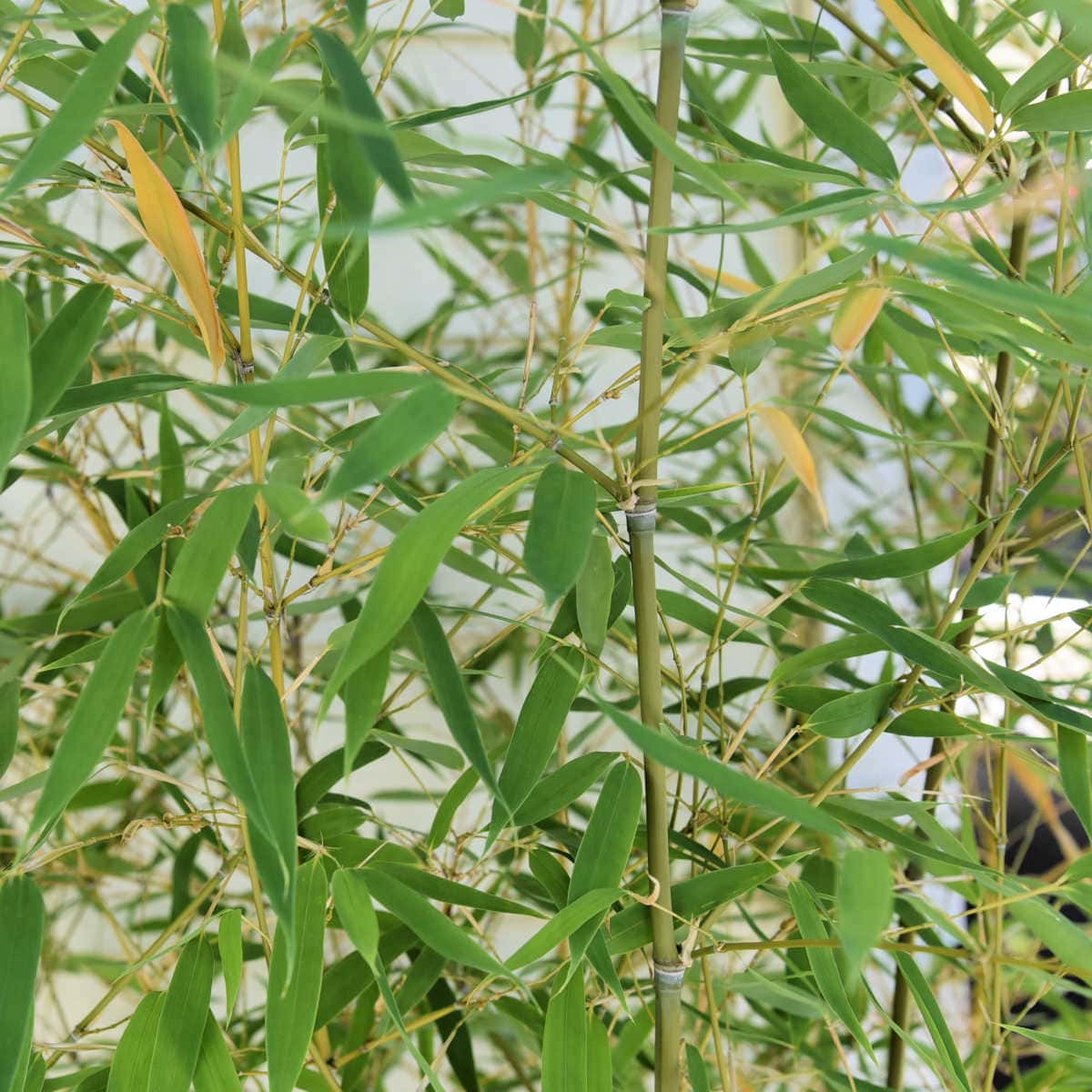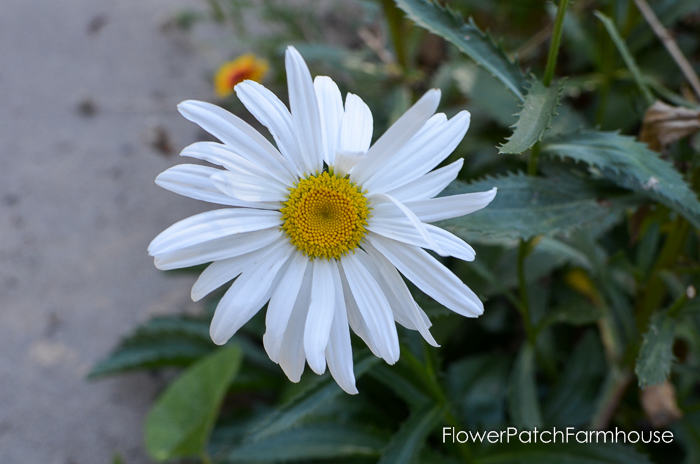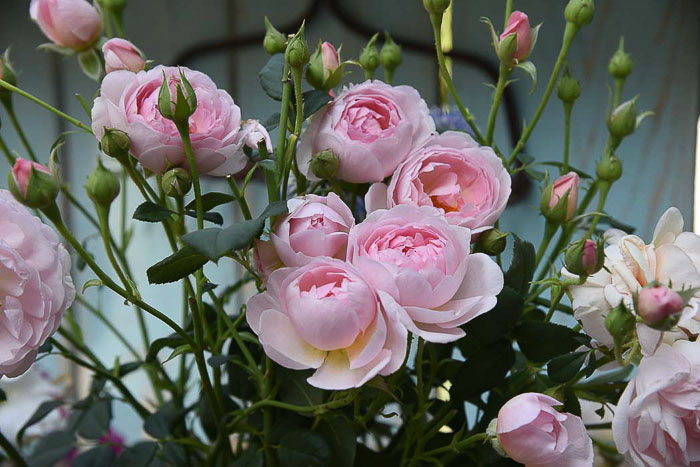When Should Roses Be Pruned
Rose Pruning: When to Prune Roses and How
Roses are often referred to as the “queen of flowers” due to their beauty, elegance, and fragrance. They are one of my must-haves in the garden! The biggest question I get about growing roses is when should roses be pruned?
I will admit my advice is not always the most widely accepted but it has worked for 40+ years for me and I stand behind it.
Admittedly, to maintain their health, vigor, and abundant blooms, proper pruning is needed. But do we really ‘have’ to prune?
No, roses will grow just fine without our interference.

Have you seen the roses that bloom completely unattended in old farmyards or abandoned cemeteries? I have and though a bit rangy looking they are gloriously happy. (many are old garden roses or vintage roses which I will write an entire post about soon)
Pruning roses is not hard or as scary as some make out and even if you make some kind of error your rose will recover! So don’t sweat it.
In this blog post, we will delve into the intricacies of rose pruning, focusing particularly on when to prune roses for good results.
Why Prune Rose Plants?
Pruning a rose plant serves several important purposes. It helps maintain the shape and size of the plant, encourages strong growth, improves air circulation, and removes dead or diseased wood.
Note: Old wood, diseased branches, weak growth or damaged canes can be removed at any time, you do not need to wait.
Additionally, pruning can stimulate the production of new shoots which turn into new blooms and enhance overall plant health. To maximize these benefits, it can help to understand the best time to prune rose bushes.
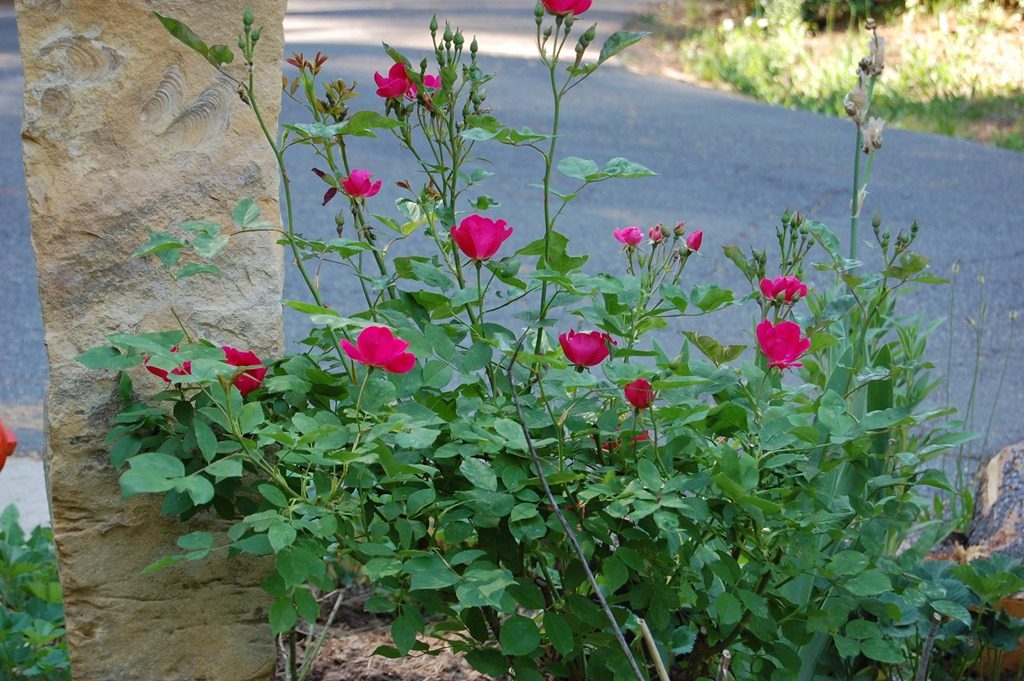
Timing: When Should Roses Be Pruned
The timing of rose pruning depends on the type of roses and the climate in which they are grown.
Generally, there are two main pruning periods: a major pruning in late winter or early spring and a minor pruning after the first flush of blooms in summer.
Remember, these are not hard and fast rules but merely recommendations. You can prune at any time if you need to.
Major Pruning
Late winter or early spring, when the rose is still dormant or is just breaking dormancy is the ideal time for major pruning for quite a few folks but not all.
One old wife’s tale bandied about is when the Forsythia blooms you can do your rose pruning.
But that does not always work for me or others as we can still be buried in snow. Also, it is recommended to wait until after the threat of severe frost. And that last severe frost may not come until late Spring.
NOTE: Always keeping in mind your local conditions makes more sense than a set timeframe.
For example, we have freakish Springs and we can get a few weeks of very warm weather then some dramatic drops in temperatures, more snow, and or a hard freeze.
If I do a major prune, which can stimulate a lot of tender new growth, the freeze can damage that new growth severely. This won’t kill the plant but will delay blooming for a few weeks.
I prefer to do a good prune in late Fall. I take my roses down by a third at least if not more. (this is different than pruning climbers or ramblers)
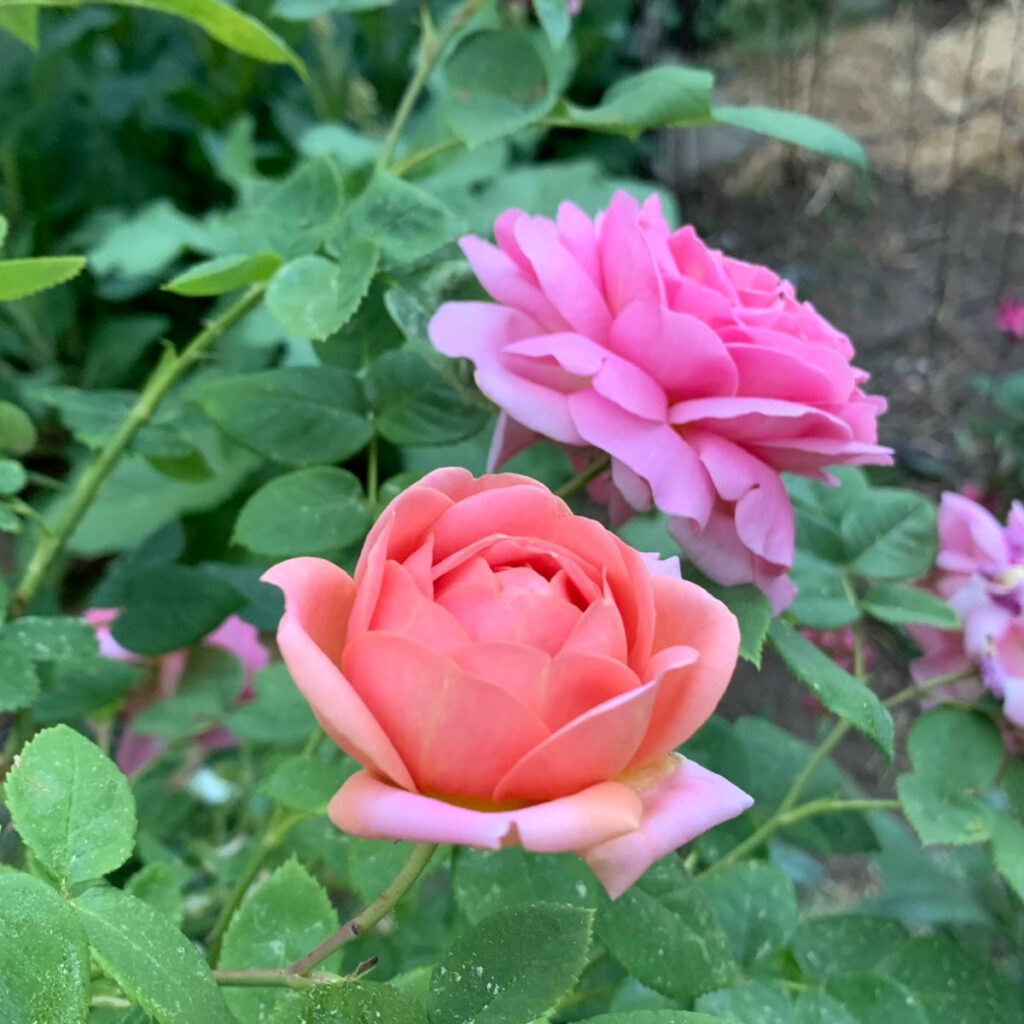
Yep, not the norm but this also helps my roses since we get super heavy wet snows that can break the rose canes. (which does more damage than perceived improper pruning)
So the takeaway here is to do what is best for your climate and growing conditions. Test things out and stop worrying about being exact!
So to sum up this portion, the timing will vary depending on your climate, zone and growing conditions.
Pruning Myth: Cut a healthy cane at a 45-degree angle. Fact: this is bunk, there is no benefit to cutting at an angle.
Minor Pruning
After the first wave of blooms, usually, in late spring / early summer, minor pruning can be performed.
This pruning is often referred to as deadheading, which involves removing spent flowers to encourage further blooming.
This is a great time to start roses from cuttings!
Growing Roses from Cuttings – Beginner Friendly!
Starting new roses from cuttings is no only easier than you think it is so much fun!
With most modern roses and hybrid teas bred to repeat bloom during the summer this type of minor pruning will continue as they bloom and when the flowers fade.
Most will recommend stopping deadheading to allow your rose to enter dormancy. But that is also not completely accurate anymore.
Most modern shrub roses will continue to put on new growth whether you deadhead or not.
That is how they are bred. Yes, new tender growth can get damaged with a sudden hard freeze but it won’t kill the plant.
So don’t fret about when to stop deadheading and when your first freeze is. (another thing I have learned in growing roses both in a warmer zone and in a much colder one)
Remember you can prune anytime even during the growing season for broken, damaged, diseased, dead wood or canes growing in the wrong direction.
Hybrid Tea roses can be a little more finicky to grow in some climates, if you have not had success with growing them try other types of roses.
Pruning Techniques
Now that we have covered the basic timing principles, let’s discuss the techniques involved in rose pruning.
Tools
Before you start pruning, it is essential to have the right tools. These include sharp bypass pruners, long-handled loppers for thicker canes, and sturdy gloves to protect your hands from thorns.
I was just recently at a Rose Pruning forum with a renowned rosarian and he told us about these pruners that he tossed out his Felcos for and I bought some. They are fabulous, you can find them here.
Major Pruning Technique
Begin by removing any dead, damaged, or weak canes. Cut them back to the base of the plant or just above the bud union (graft joint).
Next, prune the remaining canes to an outward-facing bud eye, about 1/4 inch above the bud.
Make clean, cuts. Don’t worry about making them at a 45-degree angle, that is an old wives’ tale. As long as it is a clean cut you are good.
Do not paint the cut with white glue or any other product, this is another garden myth.
Aim for an open-centered shape. This is to keep the center of the rose open for good circulation. But don’t go overboard, you don’t want a big gaping hole in the middle of your rose.
We want healthy plants not a weird looking V shape with nothing in the center of the bush.
Minor Pruning Technique
For minor pruning or deadheading, simply remove spent flowers by cutting just above a healthy, outward-facing bud or side shoots. This will redirect the plant’s energy into producing new blooms.
Deadheading Roses
How to deadhead roses in your garden for maximum enjoyment and blooms! Techniques and tips.
Special Considerations
While the general principles of rose pruning apply to most varieties, there are a few additional considerations to keep in mind.
Climbing Roses
Climbing roses often require a different pruning approach. For healthy growth, prune these varieties lightly after their initial blooming period, removing any weak or wayward growth.
However, hard pruning for shaping and training is usually performed during the dormant season.
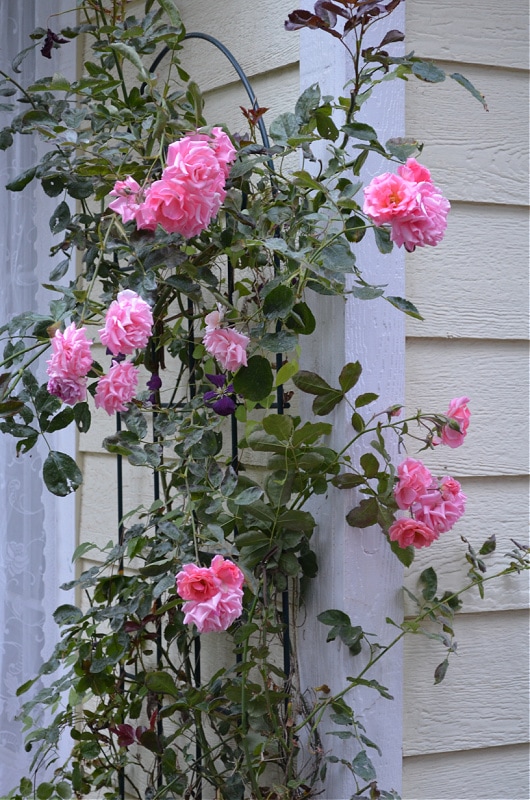
All the best rose tips
Growing Eden Climbing Roses
My Eden Rose is one of my all-time favorite roses. Today I will share how you can grow this beauty and enjoy it in your garden!
Hybrid Tea, Grandiflora and Floribunda Roses
These modern rose varieties benefit from more severe pruning during the dormant season to encourage robust growth and abundant blooms.
You can even take the main canes down to 12 inches if you need to. (I prefer own root roses over grafted varieties as you never need to worry about suckers emerging from below the graft or bud union)
Shrub Roses
Shrub roses are typically more vigorous and naturally shaped, requiring less pruning.
However, it is still important to remove any dead canes or damaged wood and perform light pruning to maintain its shape and health.
Note: English roses are considered shrub roses.
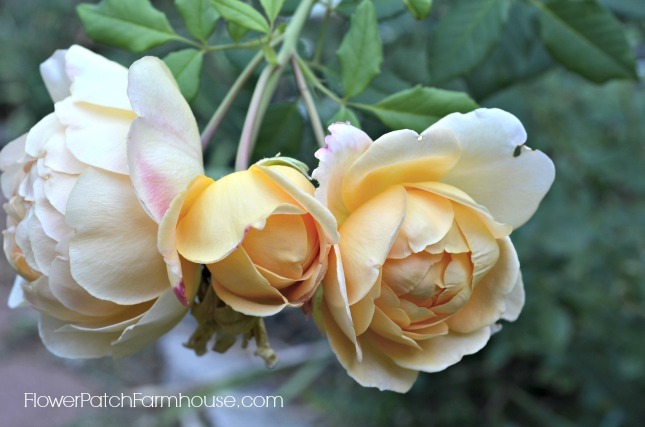
Remember to consider the specific needs of different rose varieties and your local climate when deciding when and how to prune your roses.
With practice and patience, you’ll become adept at this gardening art form, ensuring that your roses thrive and bring you joy year after year.
Happy pruning!

